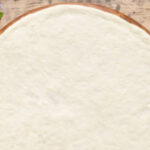Pizza is one of the most popular foods around the world. The melty cheese, tangy sauce, and crisp crust create an irresistible combination that’s hard to beat. However, pizza’s reputation as an unhealthy indulgence leaves many wondering if it can fit into a balanced diet. In this blog post, we will discuss how many calories in a slice of pizza and provide some helpful tips for anyone hoping to keep their caloric intake in check while still indulging in the occasional slice.
The Nutritional Profile of Pizza
Pizza can be highly variable in its nutrition profile, depending on the type of crust, sauce, cheese, and toppings used. Here is an overview of how these factors influence the caloric content, vitamins, minerals, and other nutritional aspects of different pizza styles.
How Many Calories In A Slice Of Pizza?
A slice of pizza can vary in calories depending on the type and toppings. On average, a slice of pizza contains roughly 250-350 calories, with cheese-only slices having about 220 calories.
However, some slices like pepperoni or meat lovers’ can have upwards of 400 calories. Different styles of pizza also vary in calorie content, for example, an 8-inch Neapolitan cheese pizza slice contains around 230 calories. Chicago-style deep dish pizzas have about 280 calories per slice, while Detroit-style pizzas contain approximately 290 calories per slice. It’s important to be mindful of the toppings as they can significantly impact the calorie count. For instance, a slice of an 8-inch pepperoni pizza contains about 275 calories.
Ultimately, being aware of the calorie content of different types of pizza can help individuals make informed choices when watching their calorie intake.
Micronutrients in Pizza Toppings
- Tomato sauce delivers disease-fighting lycopene antioxidants.
- Mushrooms provide vitamin D; olives offer healthy fats.
- Peppers, onions, and pineapple are packed with vitamin C.
- Meat toppings like pepperoni and sausage add protein and iron but also unhealthy saturated fats.
Impact of Ingredients on Nutrition
- Whole grain or multigrain crusts are higher in fiber and nutrients than white flour crusts.
- Using part-skim mozzarella or reduced-fat cheese cuts down on fat and calories.
- Replacing some or all of the cheese with veggies boosts micronutrients.
Glycemic Index and Sodium Content
- Pizza’s glycemic index can range from very high with a thick, refined crust to lower with a thin, whole wheat crust.
- The GI of pizza is lowered by combining it with salad or by using cheese varieties that are lower on the GI scale.
- Pizza can be high in sodium, especially with processed meats. Using low-sodium sauce and seasoning with herbs rather than salt reduces sodium levels.
Dietary Considerations for Pizza Lovers
Read on to learn more : What Is Marinara Pizza Sauce? Sauce Perfect for Pizza
Pizza can be enjoyed by most on specialized diets with a few adjustments.
Pizza for Specialized Diets
- Gluten-free crusts allow those with celiac disease or gluten intolerance to still enjoy pizza. Cauliflower, chickpea, or rice crusts are tasty options.
- Vegan pizza uses plant-based cheese and excludes meat toppings, making it suitable for vegans and vegetarians.
- Keto pizza replaces the crust with chicken or meat as the base and limits carbs from toppings.
- Low-FODMAP pizza avoids garlic, onions, and high-lactose cheese to reduce digestive distress.
Pizza for Health Conditions
- Those with diabetes should opt for a thinner whole wheat or multigrain crust and load up on veggie toppings.
- Limiting sodium intake from crust and toppings makes pizza easier to enjoy for those with high blood pressure.
- For heart health, choose vegetarian pizza with healthy fats from plant-based cheese and avocado instead of meat and dairy-based cheese.
Balancing Pizza in a Healthy Diet
- Pairing pizza with a salad helps increase fiber, vitamin, and mineral intake.
- Opting for half pizza, half salad allows you to enjoy both while limiting calories.
- Saving pizza for an occasional treat rather than a weekly habit promotes balance.
- Making pizza healthier at home gives you control over the ingredients.
The Social Psychology of Pizza
Beyond nutrition, pizza intersects with compelling psychological and social dimensions.
Emotional Eating and Pizza
As a beloved comfort food, pizza can be susceptible to emotional eating. To enjoy pizza in a healthy way:
- Distinguish between eating for physical rather than emotional hunger.
- Find alternative comfort foods that satisfy cravings but are healthier.
- Identify your pizza emotional triggers and have a plan to short-circuit them.
- Allow yourself an occasional indulgence for emotional self-care without guilt.
The Social Magnetism of Pizza
Pizza’s social appeal makes it a popular meal for:
- Game nights and parties
- Work meetings and children’s birthdays
- Family dinners and casual get-togethers
This highlights the bonding power of pizza across ages and settings.
Media Portrayals of Pizza
Media often paints pizza as junk food and a guilty pleasure that undermines healthy eating. In reality, pizza can be balanced within an overall nutritious diet in moderation.
Economic Considerations of the Pizza Industry
Read on to learn more : How Many Slices Are In A Little Caesar Pizza? | Tatos Pizza
Pizza is a massive economic juggernaut, from small shops to large chains.
Homemade vs Takeaway Pizza Costs
- Making your own pizza allows you to save money and control ingredients.
- Takeaway pizza is pricier but offers convenience – cost varies widely depending on extras ordered.
- Takeaway coupons and combo deals help mitigate the higher costs of delivery or pickup.
The Pizza Industry Worldwide

The global pizza industry was valued at over $145 billion USD in 2021.
- The US accounts for the largest market share at over $47 billion in revenue.
- Pizza has the highest consumption rate in the Western world and moderate consumption in Latin America and Asia-Pacific regions.
- Europe has over 127,000 pizza stores employing nearly half a million people directly in the pizza business.
Sustainability and Ethics of Pizza Eating
From its ingredients to takeaway packaging, the ecological impact of pizza matters.
Sustainable Pizza Ingredients
- Choosing organic produce supports pesticide-free farming.
- Pasture-raised meats have a reduced environmental impact over factory farming.
- Regional, seasonal ingredients reduce mileage and support local economies.
Eco-Friendly Pizza Takeaway Practices
- Many shops now offer compostable paper or cardboard pizza boxes over plastic and foam.
- Reusable pizza delivery bags prevent waste from single-use thermal bags.
- Eco-friendly shops allow customers to return reusable pizza pans after use to limit waste.
Ethical Sourcing of Ingredients
- Fair trade and equitable labor practices should be considered in sourcing ingredients like tomatoes and cheese.
- Choosing pizzas with ethically sourced meats supports humane animal agriculture.
Technological and Global Trends Reshaping Pizza
Innovations continue to push the boundaries of how pizza is made, delivered, and enjoyed around the world.
Emerging Pizza Making Technology
- Smart pizza ovens allow remote control and monitoring of cook times from your phone.
- Pizza vending machines bake and dispense fresh pizzas within minutes using built-in ingredients.
- Robot pizza assembly automates spreading sauce and adding toppings with digital precision.
Drone and Self-Driving Pizza Delivery
- Companies are piloting pizza drone delivery to reduce human involvement and deliver pizzas faster.
- Self-driving pizza cars could automate road delivery, especially in rural and remote areas.
International Pizza Preferences
- In Brazil, sandwiches de pizza are popular, made with sliced pizza fillings between bread.
- Indian pizzas feature localized spices, flavors like tikka masala, and paneer instead of traditional cheeses.
- Fish toppings like tuna and salmon feature heavily in Japanese pizzas.
- In Russia, pizza layers are inverted, with cheese atop sauce for more even melting.
Making Healthier Pizza Choices

With some easy substitutions and cooking tips, pizza can be transformed into a nutritious meal.
Healthy Pizza Crust Alternatives
- Cauliflower crust adds vegetables while removing refined carbs.
- Chickpea flour crusts pack extra protein and fiber.
- Polenta, zucchini, or eggplant crusts creatively substitute veggies for dough.
Healthy Topping Ideas
- Spiralized vegetables like zucchini or carrots make fun noodle replacements.
- Fresh herbs add flavor without sodium like oregano, basil, or cilantro.
- Fruit toppings like pineapple, pear, or figs add nutrients.
- Swapping vegan cheese slashes saturated fat.
Cooking Tips for Healthy Pizza
- Opt for part-skim mozzarella or nut-based cheeses to reduce fat.
- Choose healthy fats like olives or avocado instead of pepperoni and sausage.
- Load up the veggies and skip the meat all together.
- Use alternative pizza fuels like electric or wood-fired ovens to avoid char of charcoal or gas.
- Employ fermentation techniques to improve the nutritional quality of the crust.
Conclusion: How Many Calories In a Slice Of Pizza?
Pizza occupies a complex role straddling guilty pleasure and nutritious meal. With mindful decisions about portions, ingredients, and frequency, pizza can be enjoyed as part of a balanced diet and lifestyle. I hope this article provides a multifaceted view of pizza while empowering readers to make healthy choices. What are your biggest takeaways? Let me know your thoughts below.

Chef John Sebastian has been cooking up a storm at his simple place for years. Offering a variety of international foods, Chef John Sebastian has something for everyone- and he makes it all look easy!
He’s been featured in various food magazines and cooking shows, and his restaurant has become a local favorite in the community. When he’s not in the kitchen, Chef John Sebastian enjoys spending time with his family.









